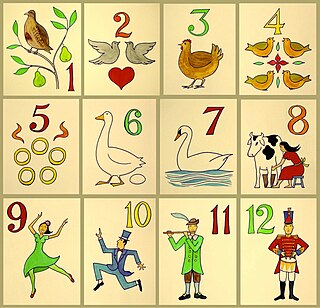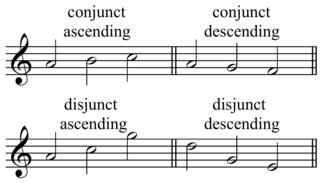Related Research Articles
Music radio is a radio format in which music is the main broadcast content. After television replaced old time radio's dramatic content, music formats became dominant in many countries. Radio drama and comedy continue, often on public radio.
Pop music is a type of popular music that originated in its modern form during the mid-1950s in the United States and the United Kingdom. During the 1950s and 1960s, pop music encompassed rock and roll and the youth-oriented styles it influenced. Rock and pop music remained roughly synonymous until the late 1960s, after which pop became associated with music that was more commercial, ephemeral, and accessible.

A melody, also tune, voice or line, is a linear succession of musical tones that the listener perceives as a single entity. In its most literal sense, a melody is a combination of pitch and rhythm, while more figuratively, the term can include other musical elements such as tonal color. It is the foreground to the background accompaniment. A line or part need not be a foreground melody.
In music theory, the key of a piece is the group of pitches, or scale, that forms the basis of a musical composition in Western classical music, art music, and pop music.
Tonality or key: Music which uses the notes of a particular scale is said to be "in the key of" that scale or in the tonality of that scale.
Arena rock is a style of rock music that became mainstream in the 1970s. It typically involves radio-friendly rock music that was designed to be played for large audiences.
A riff is a repeated chord progression or refrain in music ; it is a pattern, or melody, often played by the rhythm section instruments or solo instrument, that forms the basis or accompaniment of a musical composition. Though riffs are most often found in rock music, heavy metal music, Latin, funk, and jazz, classical music is also sometimes based on a riff, such as Ravel's Boléro. Riffs can be as simple as a tenor saxophone honking a simple, catchy rhythmic figure, or as complex as the riff-based variations in the head arrangements played by the Count Basie Orchestra.

A refrain is the line or lines that are repeated in music or in poetry — the "chorus" of a song. Poetic fixed forms that feature refrains include the villanelle, the virelay, and the sestina.

A cumulative song is a song with a simple verse structure modified by progressive addition so that each verse is longer than the verse before. Cumulative songs are popular for group singing, in part because they require relatively little memorization of lyrics, and because remembering the previous verse to concatenate it to form the current verse can become a kind of game.

In popular music genres such as country, blues, jazz or rock music, a lick is "a stock pattern or phrase" consisting of a short series of notes used in solos and melodic lines and accompaniment. For musicians, learning a lick is usually a form of imitation. By imitating, musicians understand and analyze what others have done, allowing them to build a vocabulary of their own.

The 32-bar form, also known as the AABA song form, American popular song form and the ballad form, is a song structure commonly found in Tin Pan Alley songs and other American popular music, especially in the first half of the 20th century.

Melodic motion is the quality of movement of a melody, including nearness or farness of successive pitches or notes in a melody. This may be described as conjunct or disjunct, stepwise, skipwise or no movement, respectively. See also contrapuntal motion. In a conjunct melodic motion, the melodic phrase moves in a stepwise fashion; that is the subsequent notes move up or down a semitone or tone, but no greater. In a disjunct melodic motion, the melodic phrase leaps upwards or downwards; this movement is greater than a whole tone. In popular Western music, a melodic leap of disjunct motion is often present in the chorus of a song, to distinguish it from the verses and captivate the audience.
Song structure is the arrangement of a song, and is a part of the songwriting process. It is typically sectional, which uses repeating forms in songs. Common forms include bar form, 32-bar form, verse–chorus form, ternary form, strophic form, and the 12-bar blues. Popular music songs traditionally use the same music for each verse or stanza of lyrics. Pop and traditional forms can be used even with songs that have structural differences in melodies. The most common format in modern popular music is introduction (intro), verse, pre-chorus, chorus, verse, pre-chorus, chorus, bridge, and chorus. In rock music styles, notably heavy metal music, there is usually one or more guitar solos in the song, often found after the middle chorus part. In pop music, there may be a guitar solo, or a solo performed with another instrument such as a synthesizer or a saxophone.

A drop or beat drop in music, made popular by electronic dance music (EDM) styles, is a point in a music track where a sudden change of rhythm or bass line occurs, which is preceded by a build-up section and break.
Pop rap is a genre of music fusing the rhythm-based lyricism of hip-hop music with pop music's preference for melodious vocals and catchy tunes. The lyrics are often positive, with choruses similar to those heard in pop music. This genre gained mainstream popularity during the 1990s, though the influences and roots of pop rap can trace back to late-1980s hip-hop artists such as Run-DMC, LL Cool J, and Beastie Boys.

Repetition is important in music, where sounds or sequences are often repeated. It may be called restatement, such as the restatement of a theme. While it plays a role in all music, with noise and musical tones lying along a spectrum from irregular to periodic sounds, it is especially prominent in specific styles.
Popular music is music with wide appeal that is typically distributed to large audiences through the music industry. These forms and styles can be enjoyed and performed by people with little or no musical training. It stands in contrast to both art music and traditional or "folk" music. Art music was historically disseminated through the performances of written music, although since the beginning of the recording industry, it is also disseminated through recordings. Traditional music forms such as early blues songs or hymns were passed along orally, or to smaller, local audiences.
Catchiness is how easy it is for a song, tune, or phrase to be recalled. It is often taken into account when writing songs, catchphrases, advertising slogans, jingles etc. Alternatively, it can be defined as how difficult it is for one to forget it. Songs that embody high levels of remembrance or catchiness are literally known as "catchy songs" or "earworms". While it is hard to scientifically explain what makes a song catchy, there are many documented techniques that recur throughout catchy music, such as repetition, hooks and alliteration. Selling Sounds: The Commercial Revolution in American Music says that "although there was no definition for what made a song catchy, all the songwriting guides agreed that simplicity and familiarity were vital".
A denpa song (電波ソング) is a type of Japanese music that is intentionally strange and catchy. Common features of denpa songs include intentionally off-key vocals, nonsensical lyrics, and an over-the-top tune. Denpa music has grown into a subculture within Japan, forming a significant aspect of otaku culture, and has large numbers of dōjin circles and music artists dedicated to denpa music. Denpa is not a specific genre in itself, but rather an umbrella term for various kinds of music.
Traditional sub-Saharan African harmony is a music theory of harmony in sub-Saharan African music based on the principles of homophonic parallelism, homophonic polyphony, counter-melody and ostinato-variation. Polyphony is common in African music and heterophony is a common technique as well. Although these principles of traditional African music are of Pan-African validity, the degree to which they are used in one area over another varies. Specific techniques that used to generate harmony in Africa are the "span process", "pedal notes", "rhythmic harmony", "harmony by imitation", and "scalar clusters".
"Scatterlings of Africa" is a 1982 song by the South African band Juluka, first released on their 1982 album Scatterlings. It was re-released in 1987 by Juluka's successor band Savuka on Third World Child. The song was a commercial success, charting in France and the United Kingdom. Its lyrics explore the "myriad dislocations" experienced by South Africa. The rousing and upbeat music incorporated Zulu influences. The song introduced the music of Johnny Clegg, the cofounder of Juluka and Savuka, to Western audiences.
References
- ↑ Covach, John (2005). "Form in Rock Music: A Primer". In Stein, Deborah (ed.). Engaging Music: Essays in Music Analysis. New York: Oxford University Press. p. 71. ISBN 0-19-517010-5.
- ↑ Davidson, Miriam; Heartwood, Kiya (1996). Songwriting for Beginners, p.7. Alfred Music Publishing. ISBN 0739020005.
- ↑ Monaco and Riordan (1980, p. 178). Cited in Burns, Gary (1987). "A Typology of 'Hooks' in Popular Records", Popular Music, Vol. 6, No. 1. (Jan. 1987), pp. 1–20
- ↑ Hurst and Delson 1980, p.58. Cited in Burns, Gary (1987) "A Typology of 'Hooks' in Popular Records", Popular Music, Vol. 6, No. 1. (Jan. 1987), pp. 1–20.
- 1 2 3 Kasha and Hirschhorn (1979), p.28–29. Cited in Gary Burns (January 1987). "A Typology of "Hooks" in Popular Records". Popular Music. 6 (1): 1–20. doi:10.1017/S0261143000006577. JSTOR 853162.
- ↑ Steinkoler, Jeremy. "Understanding Song Form". Archived from the original on 29 April 2014. Retrieved 21 May 2014.
- ↑ Cobo, Leila. "Radio Research: How Much does it Determine what Gets Played how often? Programmers Insist its Role is Valuable - and Misunderstood." Billboard: The International Newsweekly of Music, Video and Home Entertainment, vol. 114, no. 50, 2002.
- ↑ Dann-Beardsley, Cynthia. "Eight Seconds to Hook an Audience". Words and Music. 7. ProQuest 757538142.
- ↑ "#HookedOnMusic".
- ↑ UU, Cogitch UvA. "Hooked! App". Archived from the original on 22 May 2019. Retrieved 7 August 2014.